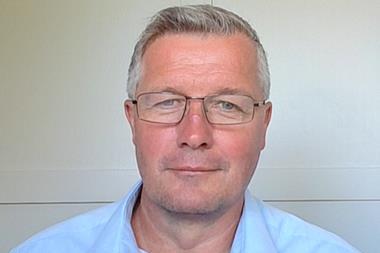Jonathan Russell reports on a selection of systems designed to help motor insurers measure risk, detect fraud, locate stolen vehicles and handle claims
The James Bond car is very nearly with us. High tech hardware is helping us control, monitor and track vehicles as never before.Satellite navigation systems are already yesterday's news. Through the mobile phone network Norwich Union can now follow cars with its pilot pay-as-you-drive system to the nearest metre. The wealth of information on driving habits such as speeds, distances and frequency of journeys the insurer will be able to gather is staggering. It could revolutionise risk profiling with the cost of insurance being calculated per mile driven.Or, as with a lot of technology, it could prove a costly experiment and get filed away in the drawer marked 'lessons learned'.What is undisputed is that the energy and activity going into inventing and implementing new technology to make motor insurance cheaper, quicker and more effective is moving faster than ever before.Anti-theft devices have come on at a startling pace. Tracking, verifying and identifying cars can all now be done at a touch of a button. Has anyone looked at physiological signatures such as fingerprinting, to immobilise, or conversely mobilise cars? This could run to breath analysis or using pheromones to identify a car owner. One development that is sure to come out over the coming months is a system that can immobilise cars from a remote site, something police are already looking at.The list of new developments seems endless, the challenge to the broker and underwriter is to choose the right one at the right price. The investor who makes the right decision earliest will steal a march on the opposition; make a mistake and you slide back a couple of squares.The good news is that it is not just the insurance world that is looking to improve standards through electronic wizardry. The police, local councils and organisations such as Thatcham and the Motor Insurers' Database are all working together to crack down on crime, improve service to the customer and reduce claims costs.Most of the products detailed below are already up and running on the market, others are in the process of being rolled out. All of them are designed with one end in mind, to streamline the biggest personal lines sector in the UK.
Norwich Union's Pay As You DrivePay-as-you-drive could revolutionise the way insurers arrive at premiums.The system sees a telematics box installed in the car, which will measure when, where and how often a car is driven using a satellite navigation system.This information is relayed to Norwich Union (NU) via the mobile phone network, where it will be used to build a new rating method based on monthly car use.Doug Vallgren, marketing manager for NU Pay As You Drive scheme, said: "Customers choosing Pay As You Drive insurance will benefit from individual premiums based on the use their cars.Vallgren said NU will also help its customers understand their total motoring costs and guide them through all aspects of their driving expenses.He explained: "If a motorist uses his car to commute into work, we may be able to show him on his monthly bill that if he drove to a park and ride instead and then used public transport, he could save on his motor insurance, parking fees and petrol."The system is currently being tested in a number of NU staff cars before being installed in customers' vehicles. Vallgren is one of those testing the technology."I was on a business trip to Swansea and couldn't find my hotel. When I got back to the office, I could see on the system exactly where I had gone wrong. Our Pay As You Drive pilot is focusing on the insurance benefits, but at that time I wished the device had satellite navigation."- A number of other insurers are known to be looking at pay-as-you-drive systems.
ActiveSNAPActiveSNAP offers a virtual site visit through aerial photography of roads, junctions and roundabouts.The system is designed to allow claims handlers to view the site of a claim without leaving their desks - dramatically reducing the cost of site visits and speeding up claims handling.The online system gives access to a national database of aerial photography taken at low altitude. The system includes measuring tools and computer generated models that can be overlaid on the photography. Though not expressly designed for the purpose, the system would seem to lend itself to offshore operations where claims handlers may not be familiar with UK roads.ActiveGeo, the company behind ActiveSnap, is looking at rolling out a ground level photography system that could help both claims handlers and underwriters in assessing the risk of an area.- Though the system is thought to be in use, or being looked at, by the majority of insurers, few except for Esure have gone public on it.
Telephone DirectionsTelephone Directions is designed to provide clients with the benefits of satellite navigation with an added human element. The system uses the client's existing mobile phone and hands-free system to provide the insured with an emergency helpline to call should they get lost or held up by traffic congestion.One call to Telephone Direction's call centre establishes where the client is and where they are going. The two-tier service offers to either talk the client to their destination on a turn-by-turn basis, or during the call the required directions can be left on the insured's voicemail.The helpline is a 24/7 service specifically targeted towards women drivers and anyone else not wishing to broadcast the fact they are lost by asking a stranger.The product will take into account up-to-date traffic information when planning the route. The software used is accurate anywhere in Europe.The service is designed both as a stand-alone package and a differentiation product for an insurance provider. Pricing starts from £10 per annum.- Telephone Directions is in talks with a number of insurers about their product. It has not been picked up by any major insurer.
ANPRANPR involves the automatic detection and recognition of vehicle registration plates followed by a check of those details against one or more databases.Typically, a system comprises a digital video camera capable of 24-hour day and night operation. This system can rapidly and accurately identify vehicles, 24 hours a day, in all weather conditions and up to speeds of 120mph. The hardware can be adapted for either a static long-term environment, such as the congestion charging in London, or as part of a mobile set-up for the police or local authority officials to check on vehicles.A team of 16 West Midlands police officers demonstrated the effectiveness of the equipment when 1,662 arrests were made across 171 ANPR operations.Of those arrests, 34 were for robbery, 250 for vehicle crime, 376 for theft, 27 for burglary, and 200 for drugs offences; £500,000 worth of stolen property and 64 stolen vehicles were recovered.- Legislative problems mean that ANPR systems are not yet linked to the motor insurers database, a problem the government claims to be aware of and tackling.
TrackerTracker is an electronic locating device, secretly hidden within vehicles.When activated in the event of a theft, it emits a silent radio signal that can be picked up by detection equipment fitted in vehicles in all 52 of the nation's police forces. Fixing the signal's position then leads them to the vehicle's exact location and, sometimes, the unsuspecting thieves.Over the past year Tracker's cover has also extended into Europe and cars can now be tracked in France and Spain.Since 1993, the system has helped police retrieve more than 10,900 stolen vehicles worth more than £192m and has aided the apprehension of more than 1,550 thieves. In addition, more than 90% of the vehicles taken are recovered within six hours.Many insurance companies offer a reduction on insurance premiums if tracker is fitted.Tracker Network also operates fleet management systems, which provide fleet managers with information on their vehicles including position, speed and deviation from set routes. Using the data, companies can optimise the use of their fleets, improve customer service and save considerable amounts on fleet costs.
VIN FinderVINfinder SMS is a text messaging service from APAK designed to reduce the risk of vehicle fraud. The service will allow people to verify a vehicle's true identity.The customer uses his mobile phone to text a vehicle's identification number (VIN) to APAK. The VIN number is decoded and information on the vehicle's make, model, year of construction and where it was built is quickly returned to the customer.If the details do not match the vehicle which is being checked, there is a possibility of fraud.In this case further examination of the vehicle's documentation is needed to clarify its identity.- VINfinder is designed for people on the move who need to verify VIN numbers quickly and conveniently.
Mighty DotMighty Dot aims to reduce theft, burglary and personal injury claims by making a vehicle worthless to professional thieves.The system sprays 10,000 microdots, each about the size of a grain of sand and laser-etched many times with the vehicle's identification number, all over the engine and underside of the vehicle.The idea is that with so many Mighty Dots over so many areas it is virtually impossible to remove them, thus there is no point in stealing the vehicle to break for parts. Police have to find only one dot out of 10,000 to establish the vehicle's true identity.In Australia, where the system is fitted as standard to many cars, including BMW and Porsche, the National Motor Vehicle Theft Reduction Council has reported a reduction in stolen unrecovered BMWs of 60% in two years.When featured on BBC Tomorrow's World, the head of Scotland Yard's stolen vehicle squad, David Ryan, said of the Mighty Dot system: "What this does is take the profit away from the criminal. He is going to have to do much work to try to remove these markings and he will never be able to remove all of them."- No insurer has yet signed up to promote Mighty Dot as part of its theft prevention strategy.
Hosted by comedian and actor Tom Allen, 34 Gold, 23 Silver and 22 Bronze awards were handed out across an amazing 34 categories recognising brilliance and innovation right across the breadth of UK general insurance.












































